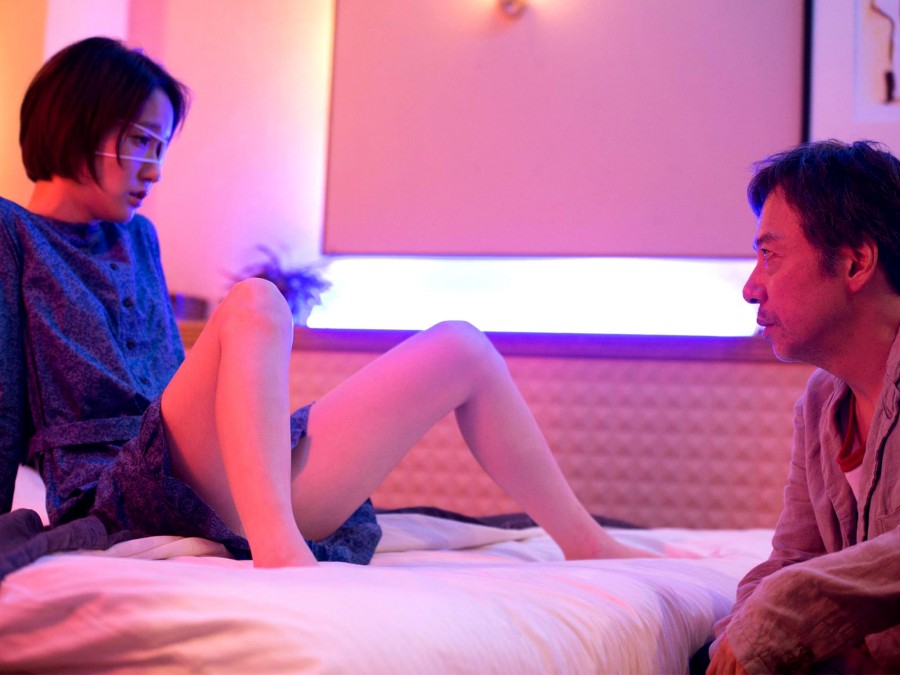
Earlier this year, the famed Japanese film studio Nikkatsu announced they were reviving their Roman Porno division. Part arthouse, part softcore pornography this division of Nikkatsu thrived during the 1970s and ’80s, presenting to Japanese audiences the most groundbreaking cinema of the era. With almost complete creative freedom as long as they met the minimum requirements of having a sex scene every ten minutes, they were among the most prolific and creative producers of Japanese pink films. In an attempt to launch the Roman Porno New Wave, five Japanese filmmakers have been selected to make a film for the series, each with a different theme. Presented at Montreal’s Festival du Nouveau Cinema, Anti-Porno represents the first wave of this revived smut studio.
Among them is the newest film from arthouse wunderkind Sion Sono, who has dazzled, offended and shocked audiences with films like Love Exposure, Tokyo Tribe and Why Don’t You Play in Hell? Working under the theme of “art” Sono’s viciously self-referential Anti-Porno deconstructs the purpose of Roman Porno through an experimental metatextual experience. Shot with vibrant saturated angst, the film portrays Kyoko (Ami Tomite) as both porno star and innocent schoolgirl, and the increasingly fractured layers of cinema and life converging.
Toying with fetishistic imagery ranging from rape-play to golden showers, Sono skirts with controversy in his revitalised film. With some audience members visibly perturbed by his have-your-cake-and-eat-it-too ethos, a blanketed dismissal of the film on the basis of its sometimes gleeful portrayal of sexual assault, seems unfair. The film bends over its own reality so many times, the line between fantasy and fiction becomes indistinguishable and the film’s overarching mindscape, dictated by a twisted teenager looking to become a “whore,” subverts simple appraisals of the film’s real/not real sexualised violence.

As Kyoko aspires to be “a whore” her journey to become the future star of Roman Pornos is often an elicit path paved with shame and confusion. With bitingly satirical scenes that poke fun at the shameful discourse surrounding sex, an adolescent Kyoka sits at the family dinner table and asks her parents about their nightly romps. For her, it seems unfair that she’s taught about how evil and dirty sex is, while her parents indulge near constantly in their insatiable hunger for each other. Neglected and heartbroken after her sister’s suicide, she wants to experience the promised connection that sex offers but is overwhelmed by the shame of her desires.
The film’s sex scenes are numerous, as dictated by the only real rule of the Roman Porno. They are eclectic, vibrant and surreal – treated with rare artistry and imagination. One sex scene in particular stands out in spite of lasting just a few seconds long. Deep into the twisting labyrinthian memories and fantasies of Kyoko she opens up a large white cake box, to look down at miniature versions of her parents making love. Clearly inspired by Lynch and Mulholland Drive in particular, Sono threatens to unravel the social structures that keep sex under lock and key.
As Sono has faced controversy in the past for his violence against women, Anti-Porno feels particularly refreshing. It is at times self-indulgent but ultimately sides on the untapped sexual imagination of women. Closer in spirit to arthouse films like Valerie and her Week of Wonders than an outright exploitation film, the film portrays a sexual awakening under the pressures of a repressed society. The violence that was present and contentious in Sono’s earlier films Cold Fish and Tokyo Tribe. where women are abused and objectified to satisfy male desire, are replaced by the complex and often perverted desires of the nearly all-female cast. Although still operating under the confines of shame and patriarchal powers, this yearning for escape and sexual solace overrides the film’s more troubling incidents. The masochistic desires of Kyoko are both liberating and a reflection of her shameful upbringing, existing in a powerful duality of obligation and longing.
Saturated and abstract, Sono seems to be the perfect filter for the revived Roman Porno house. Living up to the promise of delivering a sex scene every 10 minutes and wild inventiveness, Anti-Porno dazzles and offends in equal measure, offering up a reality-bending journey into the world of softcore pornography. Bringing pornography back into the cinemas, Nikkatsu’s future projects within the series are worth keeping an eye on as art and sex converge for a lusty audience.
Published 14 Oct 2016

Anna Biller’s The Love Witch offers a playful take on a genre dominated by male perspectives.

Iconic stars like Anita Strindberg and Edwige Fenech are the thread that ties this deviant subgenre together.

How many ’60s exploitation movies have you seen where women get to smoke, drink, drive and fight?